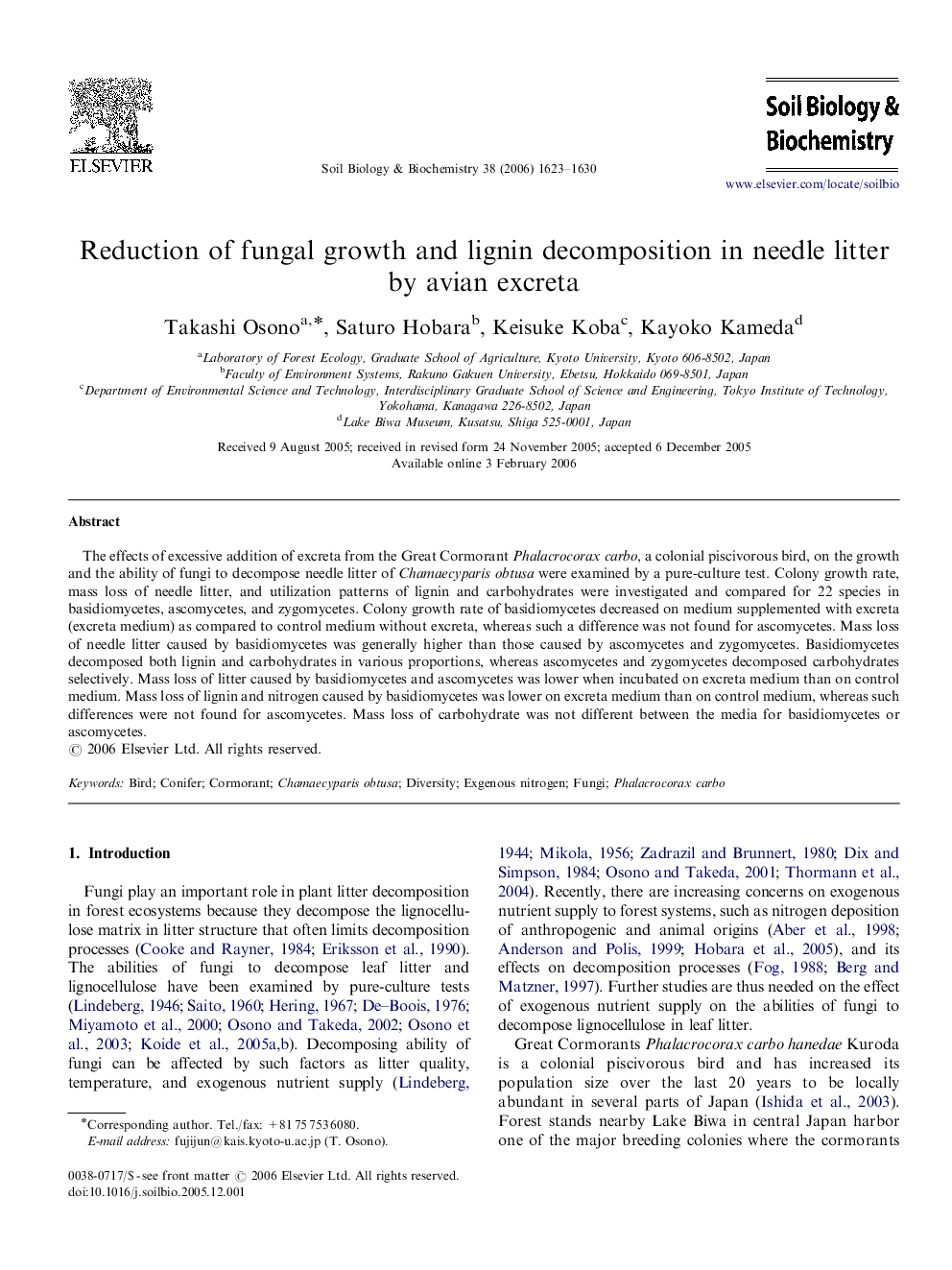| Article ID | Journal | Published Year | Pages | File Type |
|---|---|---|---|---|
| 2026566 | Soil Biology and Biochemistry | 2006 | 8 Pages |
The effects of excessive addition of excreta from the Great Cormorant Phalacrocorax carbo, a colonial piscivorous bird, on the growth and the ability of fungi to decompose needle litter of Chamaecyparis obtusa were examined by a pure-culture test. Colony growth rate, mass loss of needle litter, and utilization patterns of lignin and carbohydrates were investigated and compared for 22 species in basidiomycetes, ascomycetes, and zygomycetes. Colony growth rate of basidiomycetes decreased on medium supplemented with excreta (excreta medium) as compared to control medium without excreta, whereas such a difference was not found for ascomycetes. Mass loss of needle litter caused by basidiomycetes was generally higher than those caused by ascomycetes and zygomycetes. Basidiomycetes decomposed both lignin and carbohydrates in various proportions, whereas ascomycetes and zygomycetes decomposed carbohydrates selectively. Mass loss of litter caused by basidiomycetes and ascomycetes was lower when incubated on excreta medium than on control medium. Mass loss of lignin and nitrogen caused by basidiomycetes was lower on excreta medium than on control medium, whereas such differences were not found for ascomycetes. Mass loss of carbohydrate was not different between the media for basidiomycetes or ascomycetes.
